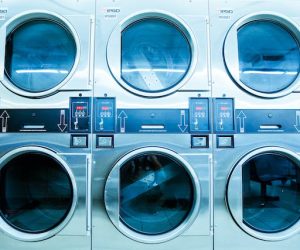
The name Carrier is synonymous with air conditioning. The company founder, Willis Carrier, invented the air conditioner in 1902 and patented it in 1904.
Carrier became an independent air conditioning company in 1915, and they have been making high-quality HVAC products ever since. They are still a leader in the HVAC industry today. The company’s filters are considered superior for dust protection.
When you trust your HVAC system and your lungs to Carrier, you will be in good hands. The real trick is knowing what kind of Carrier filters will clean your air the best.
How Air Filters are Rated
In the United States, the quality of air filters is rated by a system called MERV which stands for Minimum Efficiency Reporting Value. MERV ratings go from 1 to 16. The higher the MERV rating, the better the quality of the air filter.
MERV ratings are determined by the size of the particles that an air filter can capture. It is also determined by the frequency with which it can capture these particles. Carrier recommends having an air filter with a MERV rating of 13 in your home. Filters with high MERV ratings will be able to capture things like viruses and pet dander.
Why it is Important to Get Rid of Dust
Not only can dust cause allergies and discomfort, but it can also cause the structure of the home to deteriorate over time. Home accents like sconces can start to fall apart under the weight of too much dust. Furniture can also become unsightly and fall apart when a home is very dusty and dirty.
An air filter with a rating of 1 to 4 will capture large particles of the basic household dust. However, there are different kinds of dust particles that can form in a home. It is important to keep dust out of the HVAC system. If it accumulates, it can cause the HVAC system’s circulation to be poor.
What Carrier filters are the best for removing dust?
An air filter with a rating of 1 to 4 will capture large particles of basic household dust. However, different kinds of dust particles can form in a home.
There are three basic types of dust, each of which has its own dangers. Dust is defined as a solid particle that can become airborne, and can be very tiny. Some particles are smaller than one micron and others are up to 100 microns large.
There are three categories of dust. L class dust is low risk. It includes household dust, particles from construction, and soil.
The medium risk class of dust includes particles that come from hardwoods and cement. It also includes dust that comes from paint.
H Class dust is high risk and includes asbestos, glass or wood particles, and mold. A person can get sick from breathing in this type of dust. The particles are very tiny, and you will need a good filter to get rid of them.
None of these types of dust are unusual in the average home. Hence, it is best to get the highest quality of air filter your system will allow.
Carrier filters with ratings from 1 to 4 might capture basic dust particles. However, you want to be able to capture the very tiniest particles. Because they can be the most toxic. Filters with MERV ratings between 1 and 4 may be able to capture dust particles, but they will only capture them about 20% of the time.
A filter with a rating of 5 or 6 will be able to capture particles as small as 3.0, and it will catch them about 49% of the time. A filter with a rating of 7 or 8 will be able to capture the same size particles, but they will be able to do so 84% of the time.
Filters with a MERV rating of 9 or 10 will be able to capture particles as small as 1.0 microns about 85% of the time.
Filters with ratings of 11 or 12 will capture particles as small as 1.0 microns 89% of the time.
High-quality Carrier air filters are inexpensive in the long run. When you use a high-quality air filter, and you replace it at the proper intervals, you will keep your home healthy and clean.



